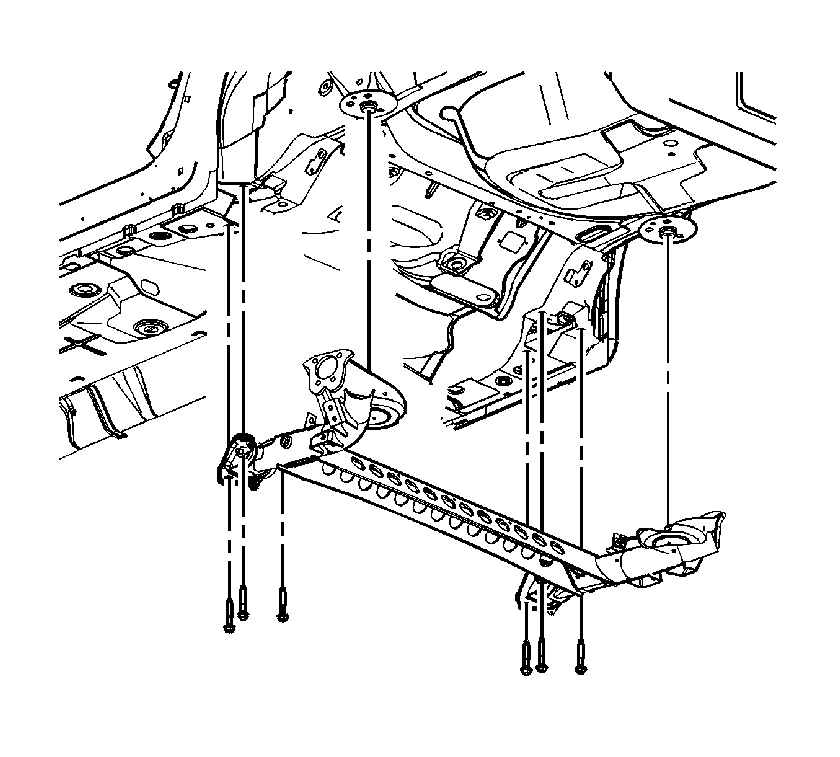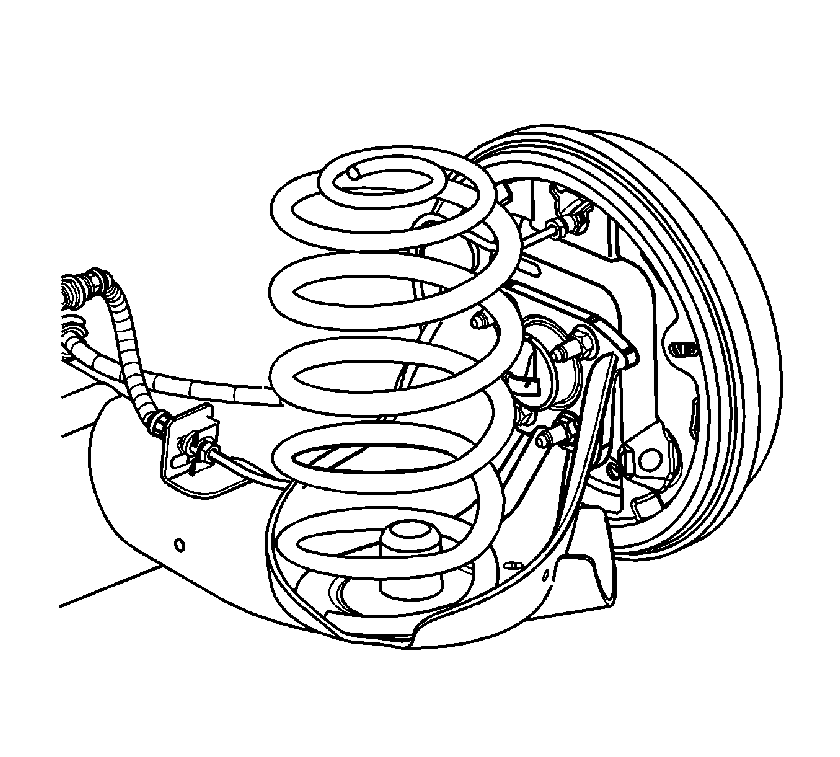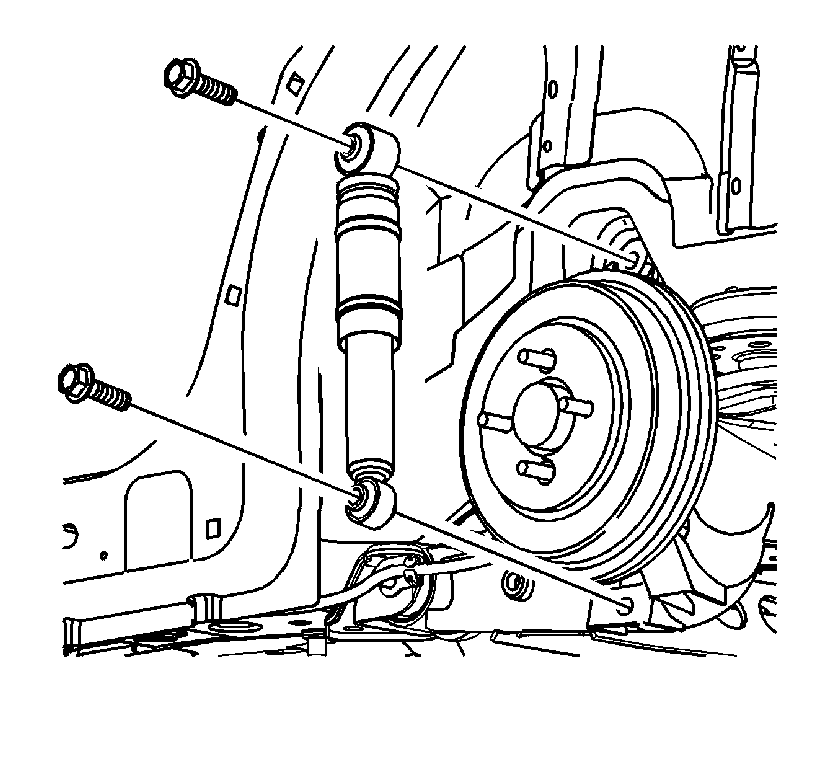This vehicle has a semi-independent twist-beam rear suspension system consisting of the following components:
| • | An axle with integral trailing arms |
| • | A V shaped twisting cross beam |
| • | Two coil springs |
| • | Two standard shock absorbers |
| • | An optional integrated stabilizer bar |
Axle Assembly

The axle assembly attaches to the underbody through a rubber bushing and bracket located at the front of each integral trailing arm. The brackets are bolted to the underbody side rails. The axle structure itself maintains the geometrical relationship of the wheels relative to the centerline of the body. The optional stabilizer shaft is welded to the inside of the "V" shaped axle beam and is non-serviceable.
Rear axle to vehicle alignment is achieved through alignment holes located in both the left and right axle bracket and underbody. Whenever the rear axle is removed for service, it is important that the rear axle is re-installed in its proper position relative to the centerline of the vehicle. Use two 12 mm rods to achieve this alignment. Insert each rod through the axle bracket into the underbody, then tighten the bracket bolts.
Rear camber and tow are not adjustable. Replace any damaged suspension components as necessary.
Coil Springs

The coil springs support the weight of the vehicle in the rear. Two spring rates exist on this vehicle, base and up-level, depending on the suspension option code. Rubber insulators isolate the coil spring at the upper and lower spring seat.
Shock Absorber

The shock absorbers are bolted to the rear axle and the vehicle underbody. The shock absorbers are non-adjustable and non-refillable. Service of the shocks requires replacement of the shock assembly.
Wheel Bearing/Hub Assembly
A single hub and bearing assembly is bolted to both ends of the rear axle assembly. The hub and bearing assembly is a sealed unit that eliminates the need for wheel bearing adjustment or periodic maintenance. On ABS equipped vehicles, the wheel speed sensors are integrated into the wheel bearing assemblies.
Although the rear suspension components are lubricated for life and require no routine lubrication, they should be inspected periodically for damage and wear.
